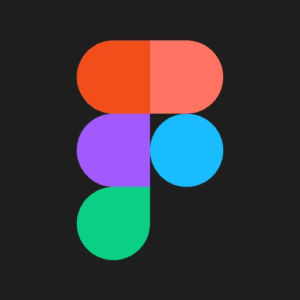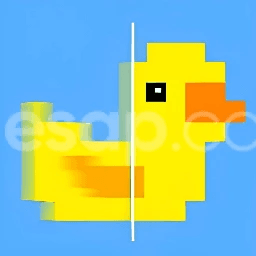Figma for Windows

- All file support both (32bit 64bit )
- The password for Zip file is: 123
- Some Large files support utorrent please Use Download Manager
Download Figma For Windows Offline Tool 2024
Figma is a free-to-use, browser-based design tool that has become an essential asset for creating and prototyping user interfaces (UI) and user experiences (UX). Its primary focus is on crafting websites, mobile apps, and other small UI components that seamlessly integrate with larger projects. Like Adobe XD and Sketch, Figma is a vector-based tool, making it ideal for precise, scalable designs. One key feature that sets Figma apart, however, is its emphasis on real-time group collaboration.
By allowing multiple users to view and edit designs simultaneously, Figma enables teams to bounce ideas back and forth until they achieve the perfect result. The tool is available across multiple platforms, including Linux, Mac, Chrome, and Windows, making it an accessible choice for designers regardless of their operating system.
Collaborative UI and UX Design
One of Figma’s standout features is its ability to facilitate seamless collaboration between team members. Whether you’re a seasoned designer or a beginner, Figma’s intuitive interface allows you to start creating almost immediately. Many design novices find it challenging to turn their creative visions into reality, often relying on expensive software or extensive experience to execute their ideas. Figma bridges this gap by offering an accessible, free platform that simplifies the design process.
The tool accelerates the transition from idea to product by fostering collaboration within a single, web-based design environment. Whether you’re working on UI or UX, the entire team can access and interact with the latest designs in real time through a shared link. By simply dropping the design link into a team chat, colleagues can instantly view the most up-to-date version of the project, making last-minute tweaks and providing feedback easier than ever.
This collaborative feature proves invaluable, especially when the team needs to agree on a final design outcome. The ability to edit files simultaneously or asynchronously eliminates the need for complicated file transfers and ensures that every team member is always working on the latest version of the project. Furthermore, Figma’s commenting system allows for real-time feedback directly on the prototype, streamlining communication and helping the team stay aligned throughout the design process.
Figma’s Powerful Features
Figma offers a robust set of features designed to make the design process both efficient and enjoyable. Among its many standout tools, the components library plays a crucial role in enabling effective collaboration. Designers can create a library of reusable components—such as buttons, icons, or color schemes—and share them with the entire team. This not only speeds up the design process but also ensures consistency across different projects. By reusing these components, teams can save time while still allowing room for creativity and customization.
Another powerful feature is Figma’s vector networks, which enable users to connect multiple segments to any node on a vector, as opposed to the standard two. This makes it easier to create intricate designs and align complex shapes, further improving the design experience. The combination of vector networks and reusable components allows teams to create highly detailed designs that are both cohesive and innovative.
Figma vs. Adobe XD
While Figma is not the only design app available, it distinguishes itself from competitors like Adobe XD and Sketch in several ways. Compared to Sketch, Figma offers a more complete package, with features such as real-time collaboration and unlimited cloud storage built in. To match Figma’s feature set in Sketch, users would need to install additional tools like InVision, Abstract, or Zeplin, which adds extra complexity and cost.
When it comes to Adobe XD, Figma still has several advantages. Although both tools are free, Adobe XD only offers 2 GB of cloud storage, while Figma provides unlimited cloud space, allowing teams to store and share an unlimited number of projects. Figma also excels in collaboration, offering a smoother, more integrated way to update and share assets with team members compared to Adobe XD. Lastly, Figma is supported on Chrome OS and Linux, making it accessible to a broader range of users, whereas Adobe XD is only available on Windows and macOS.
Team-Oriented Graphic Design
Figma is a promising and versatile tool for online graphic creation, perfectly suited for both UX and UI design. Its extensive feature set, including real-time collaboration, reusable components, and vector networks, makes it an ideal solution for teams working on everything from logos and websites to social media graphics and presentations. The free-to-use nature of Figma gives designers access to hundreds of shapes, fonts, and colors, allowing them to craft visually stunning products without the need for expensive software.
By providing high-fidelity mockups, seamless collaboration, and cloud-based flexibility, Figma helps teams transform their creative visions into reality. Whether you’re a solo designer or part of a large team, Figma empowers you to create, share, and refine designs with ease, guiding your project from concept to completion in a truly collaborative environment.
Features
- Figma offers real-time collaboration, allowing multiple users to view, edit, and comment on a design simultaneously, which enhances team efficiency. It works across platforms, including Linux, Windows, Mac, and Chrome OS, making it accessible for all users. As a cloud-based tool, Figma provides unlimited cloud storage, enabling easy access to designs from anywhere.
- A key feature is the components library, which lets designers create and share reusable elements like buttons, icons, and color schemes across projects. This maintains consistency and saves time. Figma also supports vector networks, giving designers more flexibility in connecting multiple segments to any node for complex designs.
- Being web-based, Figma doesn’t require installation, and it automatically saves all changes to the cloud. Its built-in feedback system allows team members to comment directly on designs, facilitating communication. Figma also supports interactive prototyping, enabling designers to create clickable prototypes with animations.
- You can share live design links with team members or clients, ensuring everyone sees the most up-to-date version of the project. The tool also includes version control, so users can track design changes and revert to previous versions if necessary. Figma’s functionality can be extended through plugins, enhancing productivity and offering tools like stock images and accessibility checks.
- Finally, Figma supports unlimited projects, making it a flexible and versatile design tool for individuals and teams.
System Requirements
- Operating System: Windows 8 or newer
- Processor: 64-bit CPU
- RAM: 4 GB (8 GB or more recommended for larger projects)
- Graphics Card: Integrated or dedicated with WebGL support
- Storage: 100 MB for installation; more space needed for project files
Rating..
3.6
Total Downloads
- All file support both (32bit 64bit )
- The password for Zip file is: 123
- Some Large files support utorrent please Use Download Manager






